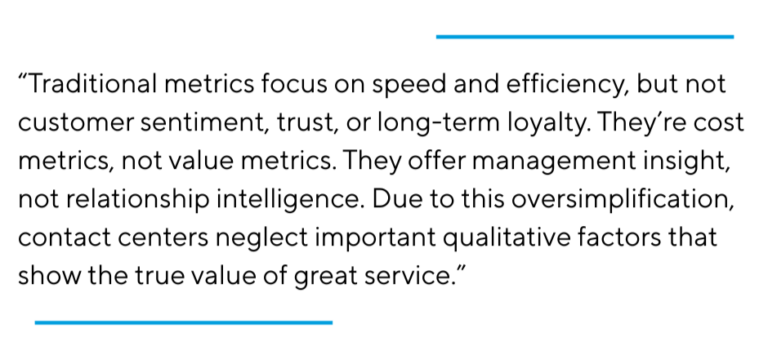Traditional contact center metrics are designed to identify areas where we can improve efficiency. They measure areas where we can be faster, with fewer resources. The primary goal is accomplish more, for less. Reducing call times, wait times, handle times, or hold times requires staffing to be just right. But none of that reflects how the customer feels. They’re simply targets to be managed through the lens of reduction.

If your dashboard is still showing AHT and SLA as top-line indicators, you’re managing a call center, not a customer experience engine.
Let’s break down the evolution:
These traditional KPIs optimize operations, not customer satisfaction.
CES and VES provide actionable insight into relationship health, not just outcomes. And when combined with AI-powered analytics, you get visibility into every conversation, not just a sample size of survey responders.

Net Promoter Score (NPS) used to be the gold standard for loyalty. Now, it’s a fading snapshot. While big brands still rely on it for brand health, its utility is limited:
That’s why NPS is being replaced by CES, VES, and automated sentiment scoring that show why an experience succeeded or failed, not just that it did.
AI in contact centers is transforming how we measure performance. Instead of relying on post-contact all surveys from a handful of customers, AI enables:
This isn’t just about faster data. It’s about better decisions. With full visibility, brands can course-correct before small issues become churn risks.
If you’re still measuring the same things you did five years ago, your contact center may be optimizing for efficiency at the expense of experience.
It’s time to stop managing calls and start managing relationships.
